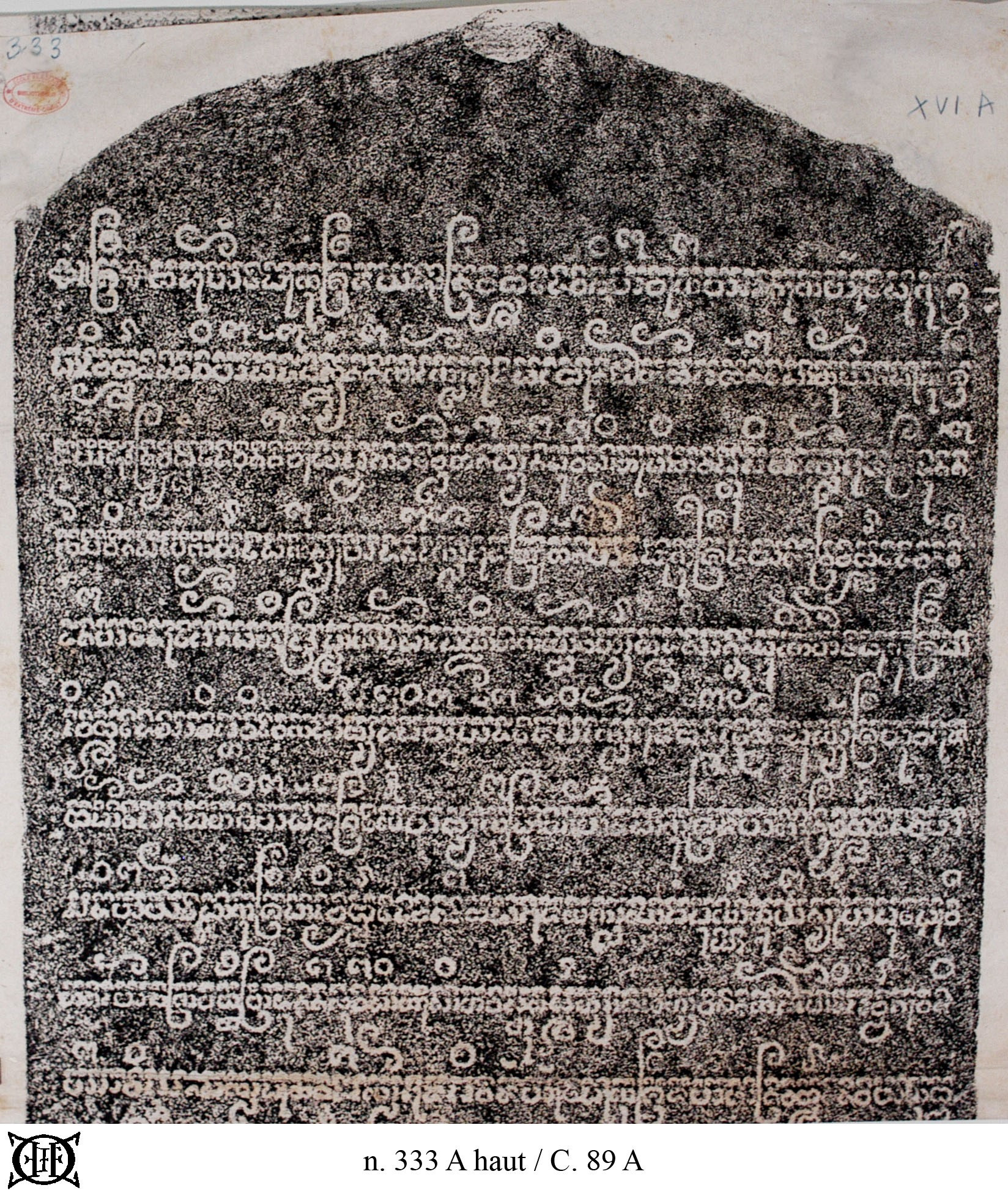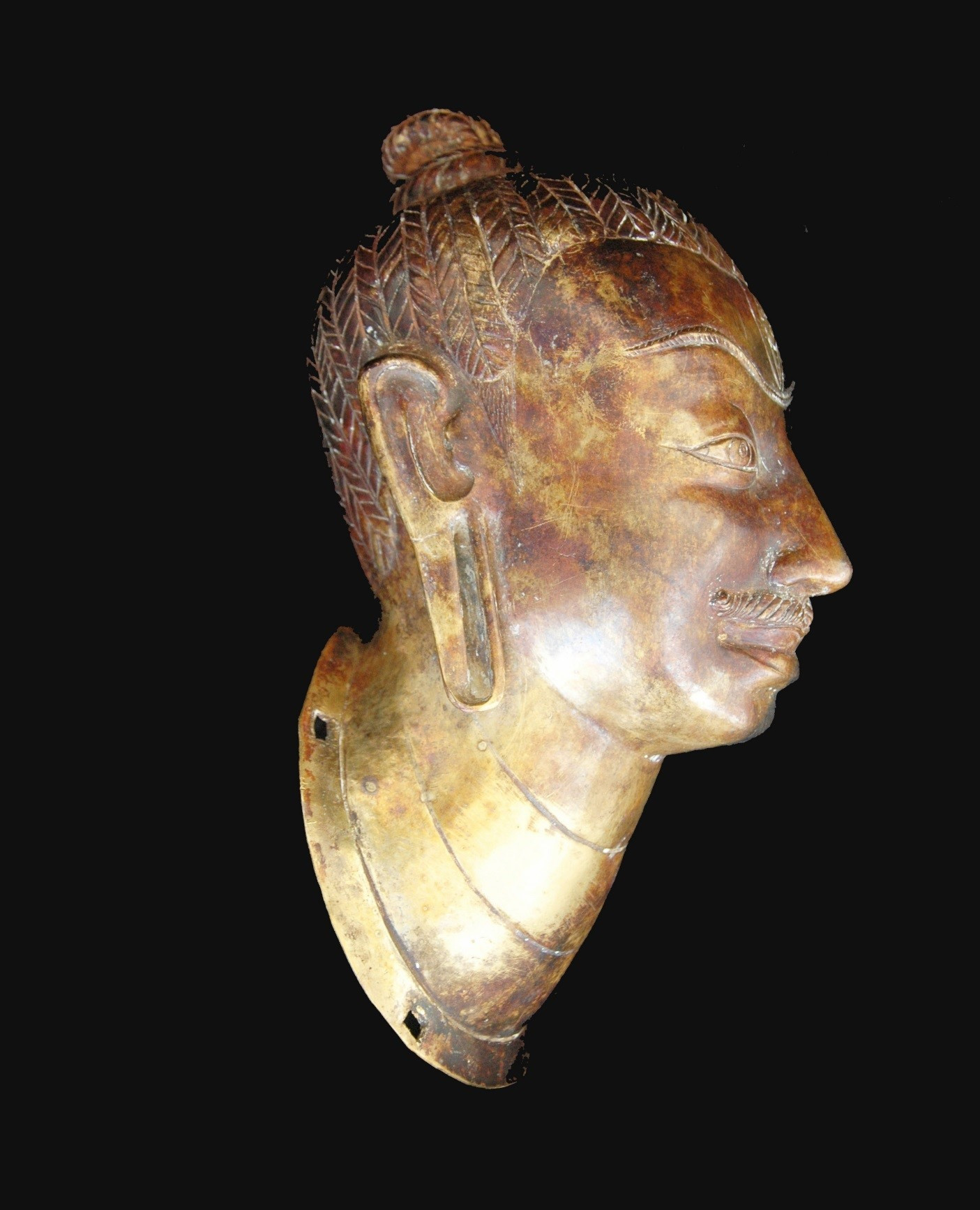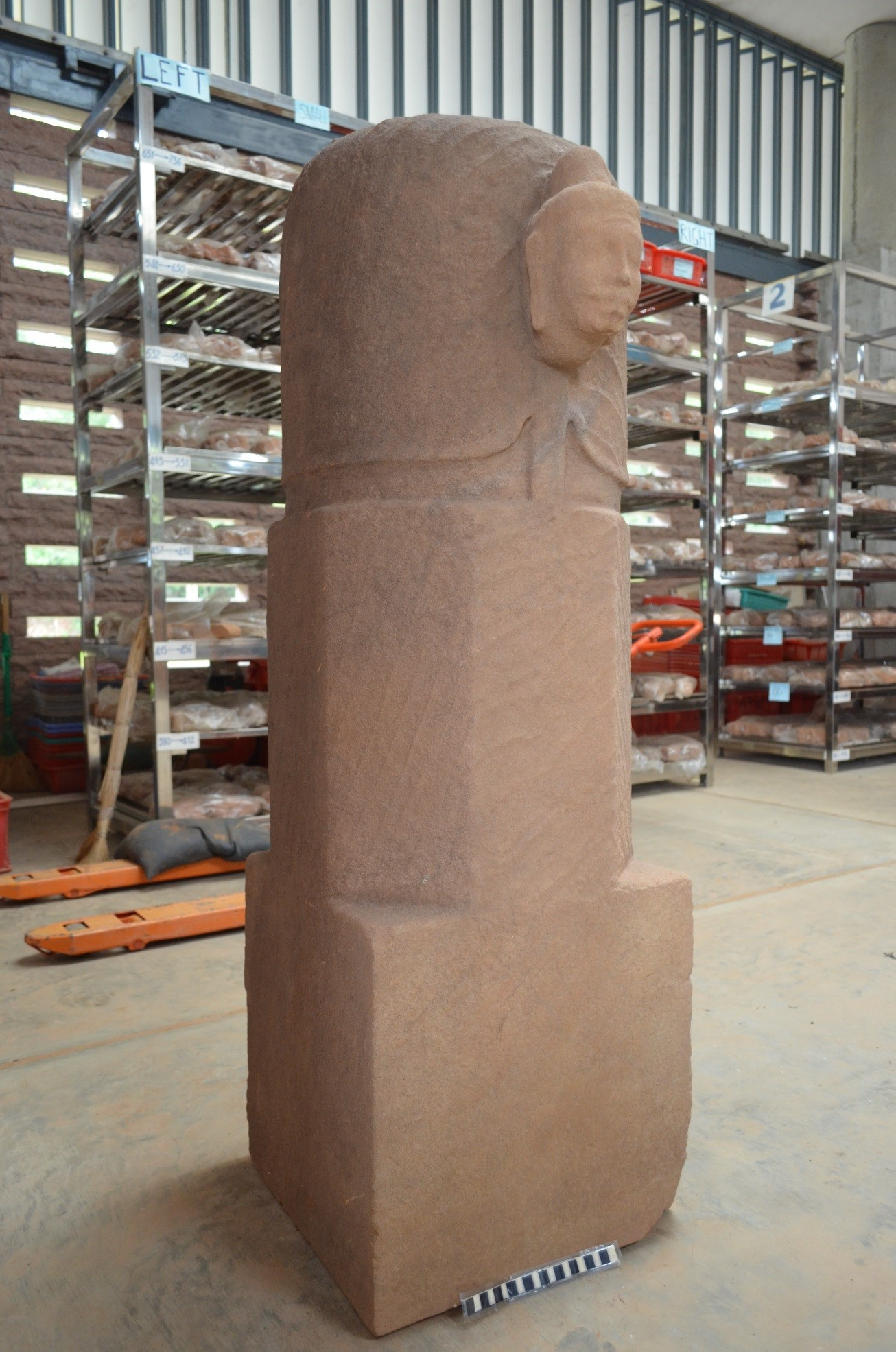
Inscription plate C 89 (EFEO Archives).
The Champa temple complex in My Son was listed as a World Cultural Heritage by UNESCO in 1999, with the English name "My Son Sanctuary".
The temples at My Son were built over 10 centuries, from about the 5th to the 14th century; some of them were destroyed many times in war and were restored or rebuilt by Champa kings.
Valuable documents from inscriptions
Information about construction and restoration is often engraved on stone door frames, attached to the architecture, or on stone steles placed in front of the main architecture, sometimes with a roof.
The 6th-century inscription, marked C 73, found in the area between stupa groups A and B, records King Śamhhuvarman rebuilding a temple that had burned down earlier. This was a period when temples were made more of wood and timber than of bricks and stones.
By the 7th and 8th centuries, temples in My Son also had a type of architecture that combined brick foundations and pillars supporting the roof dome with stone and wooden structures; the remaining vestige today is temple E1, with a thin wall structure, not suitable to support a brick roof dome like the tower temples of later periods.
Until the period when they were built entirely of brick and stone, the temples at My Son were still destroyed in wars; especially the statues and worship objects inside the temples were often looted.
The 11th-century C 94 inscription, found in Tower E, records the rebuilding of the temple of Śrīśanabhadreśvara by King Harivarman. This is an ancient Cham text, written in Sanskrit, transcribed into Latin by Louis Finot and translated into French (1904), and then translated into English by Ramesh Majumdar (1927). The inscription states that King Harivarman carried out the restoration of temples in the My Son area and in some areas of Champa after the war.
“The enemy entered Champa, occupied the country and took all the property of the royal family and the gods; plundered the temples, monasteries, villages and establishments along with elephants, horses, buffaloes, cows, crops…; plundered the temple of Śrīśanabhadreśvara and the objects that the Champa kings had offered to the god, took away all the wealth, captured all the temple servants, musicians, singers… along with the property of Śrīśanabhadreśvara; the temple became empty and there was no more worship.
King Harivarman saw that the temple of Śrīśanabhadreśvara was in ruins, so he rebuilt the temple of the god and many other temples, making them beautiful and perfect. The king offered the necessary things to serve the god, musicians, singers… and the worship was restored as before…”.

Gold Kośa discovered in Phu Long 1997. Photo: HXTỊNH
Inscription C 89, dated 1088/1089, found in Tower Group D, also mentions the restoration of the temples. “At that time, Champa was devastated. King Jaya Indravarmandeva completely rebuilt the country until it was as beautiful as before.
The king built a temple for the god Indralokeśvara at Tranuk(?), and offered much wealth. He donated gold and silver kośas and many objects to serve the gods in the stupas. All the stupas of the gods returned to prosperity, beauty and dignity as before…”.
Inscription C 100, established in 1157/1158, found in tower group G, records the achievements of a king named Harivarman (the same name as the king in inscription C 94). “According to a wish, the king, after defeating “kamvos ca yavana” (Cambodia and Dai Viet), rebuilt the destroyed temple of god Siva… During the king’s reign, all the gods and people became prosperous, the land of Champa seemed to return to a glorious era…”.
The link from inscriptions to artifacts
Archaeologists and restorers in the 20th century found broken architectural details inside some of the tower walls, evidence that Champa craftsmen reused materials from previously ruined structures.
The objects and statues inside the temple towers were also destroyed, buried or submerged in the flow of history, only to reappear thousands of years later. In 2012, a miraculous rain revealed in Tower Group E a perfect linga idol that had not been discovered by meticulous surveys and investigations by archaeologists for over 100 years.

Linga with the image of Siva, discovered in 2012. Photo: VVT
This is a linga with a typical shape with three sections: square, octagonal, and round, and especially has a relief of the head of the god Siva extending out on the upper section of the linga, representing exactly the story of the linga's origin in Hindu scriptures.
In terms of style and stone material, this linga idol is dated to the 8th century, the same period as the Altar inside the E1 tower and is ranked as a National Treasure.
In 1997, a scrap metal detector accidentally discovered the sound waves of a golden Siva statue head buried in a garden in Phu Long village, Dai Thang commune (Dai Loc), located on the north bank of the Thu Bon river, symmetrical with the location of My Son Sacred Land on the south bank.
The shape of the Siva statue's head shows that it is part of a kośa, a type of cap that covers the head of a linga idol, offered by Champa kings to the god Siva, mentioned in many inscriptions at My Son; the artifact has also been classified as a National Treasure.
And recently (2023), a bronze statue of the goddess Durgā (Umā/Parvatī) was returned to Vietnam by the US and UK security and diplomatic agencies, with information identified in the records as an artifact that was discovered and illegally transported from the My Son area.
The restored temples and the returned objects of worship, at first it sounds like a coincidental story, but within it there are echoes from the hearts, the words on stone steles from ancient times.
Source: https://baoquangnam.vn/dat-thieng-my-son-10-the-ky-xay-dung-va-trung-tu-3127133.html






![[Photo] Cutting hills to make way for people to travel on route 14E that suffered landslides](https://vphoto.vietnam.vn/thumb/1200x675/vietnam/resource/IMAGE/2025/11/08/1762599969318_ndo_br_thiet-ke-chua-co-ten-2025-11-08t154639923-png.webp)



















![[Video] Hue Monuments reopen to welcome visitors](https://vphoto.vietnam.vn/thumb/402x226/vietnam/resource/IMAGE/2025/11/05/1762301089171_dung01-05-43-09still013-jpg.webp)















































































Comment (0)